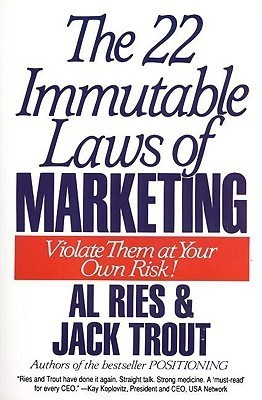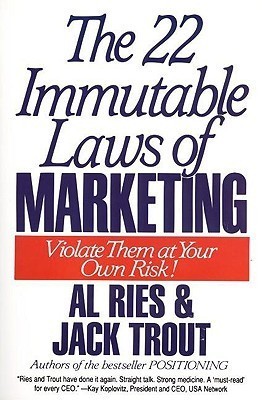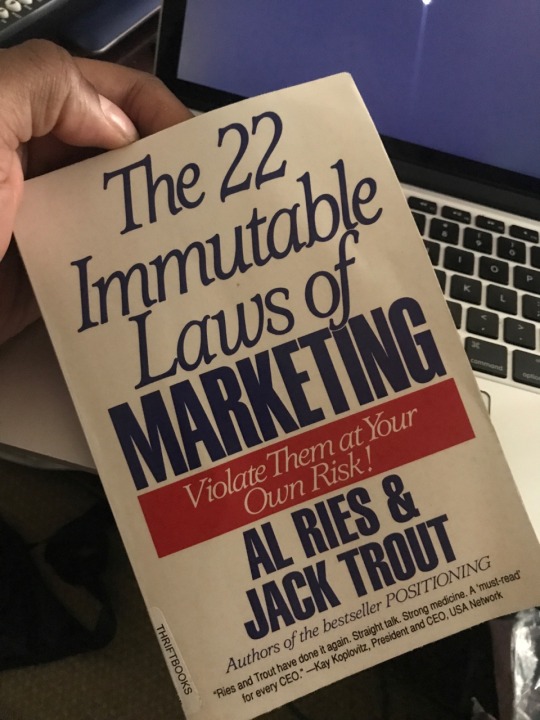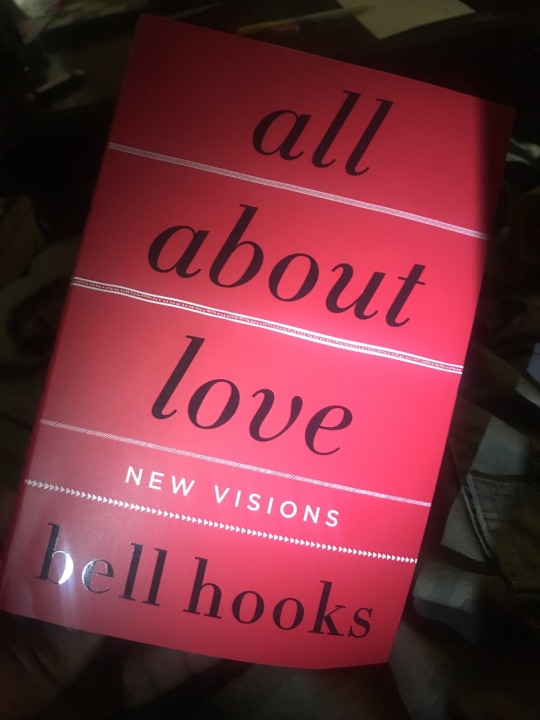#The 22 Immutables Laws Of Marketing
Text
Nicki Minaj and Cardi B Carpool Karaoke
#Nicki #Minaj #Cardi #Carpool #Karaoke
0.38 [Music]
0.38 no
0.38 [Music]
0.38 you know what now you sound like you're
0.38 kind of taking it
0.38 um
0.38 well when i do private parties i'd be so
0.38 shy
0.38 like i did a bar mitzvah not so long ago
0.38 and i never performed in front of so
0.38 many kids oh
0.38 and then like my dj he didn't have the
0.38 clean version of the song…

View On WordPress
#$0 marketing#$7 affiliate marketing course#0 dollar marketing#0 investment affiliate marketing#0 investment digital marketing#0 to 1000 affiliate marketing#0 to 10000 affiliate marketing#0nline marketing#1 page marketing plan#1 page marketing plan audiobook#10 log marketing#10 minute school affiliate marketing#10 minute school digital marketing#10 minute school email marketing#12th commerce it digital marketing#12th commerce ocm chapter 8 importance of marketing#12th ocm marketing#15 psychological marketing triggers#2024 affiliate marketing#2024 digital marketing strategy#2024 digital marketing trends#2024 marketing#2024 marketing trends#2024 social media marketing#22 immutable laws of marketing#22 immutable laws of marketing audiobook#2nd puc business studies marketing chapter#2nd sem marketing management#3 cʼs of marketing#3.0 remote marketing agency
0 notes
Text
Captain’s Log
Stardate 202404
Day 42
So here’s some more weirdness. I published a flier about an upcoming essay competition. It’s free and from a respected organization so I expected it to generate some interest, but I got crickets. A few parents asked about it, but they were not enthusiastic. I brought them into a group and nobody asked anything. Even when I post information, I get nothing—not even a thank you.
Analyzing it later, I realized my mistake. It’s like Simon Sinek’s “Start With Why.” I tried to tell the world what amazing product I had found. I even used Dan Ariely’s magic of free, but the world responded, “Meh.”
New strategy. Appeal to the people kind of people I want. Forget everyone else. Such a waste of energy.
It’s a public holiday today and it’s rainy, so the internet is jam-packed. The boys are having major lag, and the VPN is glitching. I’ve been interrupted to do IT support about a dozen times already so I’m pretty frustrated. Coffee is helping but not enough.
Today’s goal is to finish 22 Immutable Laws of Marketing, to redesign my poster and to try again. I’m going to look for a cool color palate and use text only. I’ll post my original here today and the new one tomorrow so you can see the progression.
Oh. The VPN is glitching—which mean’s I’m not posting anything today. See you with a double post tomorrow.

#alternative education#homeschool#online education#china#marketing#coffee#22 immutable laws of marketing#poster design#strategicmarketing#simon sinek#dan ariely
0 notes
Text
Book Positioning: Understanding the concept and its effectiveness

Chapter 1 What's Book Positioning by Al Ries
"Book Positioning" is a book by Al Ries that discusses the concept of positioning, which is how a brand or product is perceived in the minds of consumers. Ries argues that in order to be successful, a brand must occupy a distinct and desirable position in the marketplace, and that this can be achieved through effective communication and marketing strategies. The book provides examples and case studies to illustrate how companies can use positioning to differentiate themselves from competitors and build a strong brand identity.
Chapter 2 Is Book Positioning A Good Book
"Book Positioning" by Al Ries is a highly regarded marketing book that many readers have found to be insightful and valuable. Ries is a respected marketing expert and his books are often recommended by professionals in the field. If you are interested in marketing and branding strategies, this book could be a good choice for you.
Chapter 3 Book Positioning by Al Ries Summary
Positioning: The Battle for Your Mind is a book by Al Ries that outlines the concept of positioning in marketing. The central idea of the book is that successful companies are those that create a unique and memorable position in the minds of their customers.
Ries argues that in today's crowded marketplace, businesses need to differentiate themselves from their competition in order to succeed. This can be achieved by creating a strong and distinctive brand image that sets them apart from others.
The book outlines various strategies that businesses can use to establish a strong position in the minds of consumers, such as focusing on a specific niche, creating a strong brand identity, and being the first in a particular category.
Ries also emphasizes the importance of consistency in positioning, and the need to constantly reinforce and build upon the brand image that a company has created.
Overall, Positioning: The Battle for Your Mind is a valuable resource for businesses looking to stand out in a competitive market and create a strong, memorable position in the minds of their customers.

Chapter 4 Book Positioning Author
Al Ries, along with his partner Jack Trout, is a well-known marketing strategist and author. The book "Positioning: The Battle for Your Mind" was originally published in 1981.
Some of the other notable books written by Al Ries include:
1. "The 22 Immutable Laws of Marketing" (1993) - Ries co-authored this book with Jack Trout. It is a classic in the field of marketing and provides valuable insights into the principles of effective marketing strategy. This book has had multiple editions and is considered one of the best works by Ries.
2. "The 22 Immutable Laws of Branding" (1998) - Another collaboration with Jack Trout, this book delves into the principles of successful branding strategies.
3. "The Origin of Brands" (2004) - In this book, Ries explores the evolution of brands and the importance of creating a brand that stands the test of time.
In terms of editions and popularity, "The 22 Immutable Laws of Marketing" is often regarded as the best work by Al Ries. It has been widely acclaimed and has been revised and updated over the years to reflect changes in the marketing landscape.
Chapter 5 Book Positioning Meaning & Theme
Book Positioning Meaning
Positioning refers to the process of creating a distinct and desirable image or identity for a product or brand in the minds of consumers. In the book "Positioning" by Al Ries, the authors explore the concept of positioning as a critical element of successful marketing strategies. They argue that in today's crowded marketplace, it is not enough for a product to simply be good; it must stand out and be perceived as unique and relevant to the target audience. By effectively positioning a product or brand, companies can differentiate themselves from competitors and appeal to consumers in a way that resonates with their needs and desires. The book outlines various strategies and case studies to help businesses understand and implement effective positioning tactics in their marketing efforts.
Book Positioning Theme
The theme of the book Positioning by Al Ries is the importance of creating a unique and distinct position in the market for a product or brand. The book emphasizes the need for companies to differentiate themselves from competitors by finding a specific niche or segment to target and then consistently reinforcing that position through marketing and branding efforts. The key message is that successful brands are not just those with the best products or most advertising, but those that effectively communicate their unique value proposition to consumers.
Chapter 6 Other Accessible Resources
1. Book Positioning by Al Ries on Amazon: https://www.amazon.com/Positioning-Battle-Your-Mind/dp/0071373586
2. Book Positioning by Al Ries on Goodreads: https://www.goodreads.com/book/show/16869.Positioning
3. Book Positioning by Al Ries on LinkedIn: https://www.linkedin.com/pulse/positioning-book-summary-al-ries-jack-trout-maya-juan
4. Book Positioning by Al Ries on Twitter: https://twitter.com/search?q=Book%20Positioning%20Al%20Ries
5. Book Positioning by Al Ries on Instagram: https://www.instagram.com/explore/tags/bookpositioning/
6. Book Positioning by Al Ries on Facebook: https://www.facebook.com/search/top?q=Book%20Positioning%20Al%20Ries
7. Book Positioning by Al Ries on YouTube: https://www.youtube.com/results?search_query=Book+Positioning+Al+Ries
8. Book Positioning by Al Ries on Google Books: https://books.google.com/books/about/Positioning.html?id=UWj8AgAAQBAJ
9. Book Positioning by Al Ries on Barnes & Noble: https://www.barnesandnoble.com/w/positioning-al-ries/1139392764
10. Book Positioning by Al Ries on Audible: https://www.audible.com/pd/Positioning-Audiobook/B002V5IGVC

Chapter 7 Quotes of Book Positioning
Book Positioning quotes as follows:
1. "Positioning is not what you do to a product. Positioning is what you do to the mind of the prospect."
2. "The idea behind positioning is not to create something new and different, but to manipulate what's already up there in the mind, to retie the connections that already exist."
3. "Positioning is the single most powerful concept in marketing."
4. "In the battle for the consumer's mind, positioning is the most important weapon."
5. "The essence of positioning is sacrifice."
6. "Positioning is not what you do with a product. Positioning is what you do with a mind."
7. "In the mind of the prospect, Mercedes-Benz is synonymous with quality."
8. "To find the right position for a product, you must look at the product's unique traits, and then adjust those traits to fit within a niche that is already occupied in the mind of the consumer."
9. "Positioning is the art of sacrificing features, not adding them."
10. "The key concept of positioning is not to create something new and different, but to manipulate what's already up there in the mind."
Chapter 8 Similar Books Like Book Positioning
1. "Thinking, Fast and Slow" by Daniel Kahneman - This book delves into the ways in which our minds make decisions, offering insights into cognitive biases and how we can make more informed choices.
2. "Nudge: Improving Decisions About Health, Wealth, and Happiness" by Richard H. Thaler and Cass R. Sunstein - Building on the concepts introduced in "Wiser," this book explores how small changes in our environment can influence our decision-making for the better.
3. "The Art of Choosing" by Sheena Iyengar - This book examines the complexities of decision-making and explores how different cultures and individuals approach choices, shedding light on the factors that influence our decision-making processes.
4. "Predictably Irrational: The Hidden Forces That Shape Our Decisions" by Dan Ariely - Ariely explores the ways in which our behavior is influenced by irrational tendencies, offering valuable insights into the psychology of decision-making.
5. "Influence: The Psychology of Persuasion" by Robert B. Cialdini - This classic book examines the principles of influence and persuasion, providing an understanding of the tactics that can sway our decisions and choices.
Book: https://www.bookey.app/book/positioning
Quotes: https://www.bookey.app/quote-book/positioning
YouTube: https://www.youtube.com/playlist?list=PLnM8RR0dumuZK1RqJ-KKUu-X7SkPZcQCC
Amazon: https://www.amazon.com/Positioning-Battle-Your-Al-Ries/dp/0071373586
Goodreads: https://www.goodreads.com/book/show/141189437-positioning
0 notes
Text
3 Questions: Shaping the future of work in an age of AI
New Post has been published on https://sunalei.org/news/3-questions-shaping-the-future-of-work-in-an-age-of-ai/
3 Questions: Shaping the future of work in an age of AI


The MIT Shaping the Future of Work Initiative, co-directed by MIT professors Daron Acemoglu, David Autor, and Simon Johnson, celebrated its official launch on Jan. 22. The new initiative’s mission is to analyze the forces that are eroding job quality and labor market opportunities for non-college workers and identify innovative ways to move the economy onto a more equitable trajectory. Here, Acemoglu, Autor, and Johnson speak about the origins, goals, and plans for their new initiative.
Q: What was the impetus for creating the MIT Shaping the Future of Work Initiative?
David Autor: The last 40 years have been increasingly difficult for the 65 percent of U.S. workers who do not have a four-year college degree. Globalization, automation, deindustrialization, de-unionization, and changes in policy and ideology have led to fewer jobs, declining wages, and lower job quality, resulting in widening inequality and shrinking opportunities.
The prevailing economic view has been that this erosion is inevitable — that the best we can do is focus on the supply side, educating workers to meet market demands, or perhaps providing some offsetting transfers to those who have lost employment opportunities.
Underpinning this fatalism is a paradigm which says that the factors shaping demand for work, such as technological change, are immutable: workers must adapt to these forces or be left behind. This assumption is false. The direction of technology is something we choose, and the institutions that shape how these forces play out (e.g., minimum wage laws, regulations, collective bargaining, public investments, social norms) are also endogenous.
To challenge a prevailing narrative, it is not enough to simply say that it is wrong — to truly change a paradigm we must lead by showing a viable alternative pathway. We must answer what sort of work we want and how we can make policies and shape technology that builds that future.
Q: What are your goals for the initiative?
Daron Acemoglu: The initiative’s ambition is not modest. Simon, David, and I are hoping to make advances in new empirical work to interpret what has happened in the recent past and understand how different types of technologies could be impacting prosperity and inequality. We want to contribute to the emergence of a coherent framework that can inform us about how institutions and social forces shape the trajectory of technology, and that helps us to identify, empirically and conceptually, the inefficiencies and the misdirections of technology. And on this basis, we are hoping to contribute to policy discussions in which policy, institutions, and norms are part of what shapes the future of technology in a more beneficial direction. Last but not least, our mission is not just to do our own research, but to help build an ecosystem in which other, especially younger, researchers are inspired to explore these issues.
Q: What are your next steps?
Simon Johnson: David, Daron, and I plan for this initiative to move beyond producing insightful and groundbreaking research — our aim is to identify innovative pro-worker ideas that policymakers, the private sector, and civil society can use. We will continue to translate research into practice by regularly convening students, scholars, policymakers, and practitioners who are shaping the future of work — to include fortifying and diversifying the pipeline of emerging scholars who produce policy-relevant research around our core themes.
We will also produce a range of resources to bring our work to wider audiences. Last fall, David, Daron, and I wrote the initiative’s inaugural policy memo, entitled “Can we Have Pro-Worker AI? Choosing a path of machines in service of minds.” Our thesis is that, instead of focusing on replacing workers by automating job tasks as quickly as possible, the best path forward is to focus on developing worker-augmenting AI tools that enable less-educated or less-skilled workers to perform more expert tasks — as well as creating work, in the form of new productive tasks, for workers across skill and education levels.
As we move forward, we will also look for opportunities to engage globally with a wide range of scholars working on related issues.
0 notes
Text
3 Questions: Shaping the future of work in an age of AI
New Post has been published on https://thedigitalinsider.com/3-questions-shaping-the-future-of-work-in-an-age-of-ai/
3 Questions: Shaping the future of work in an age of AI


The MIT Shaping the Future of Work Initiative, co-directed by MIT professors Daron Acemoglu, David Autor, and Simon Johnson, celebrated its official launch on Jan. 22. The new initiative’s mission is to analyze the forces that are eroding job quality and labor market opportunities for non-college workers and identify innovative ways to move the economy onto a more equitable trajectory. Here, Acemoglu, Autor, and Johnson speak about the origins, goals, and plans for their new initiative.
Q: What was the impetus for creating the MIT Shaping the Future of Work Initiative?
David Autor: The last 40 years have been increasingly difficult for the 65 percent of U.S. workers who do not have a four-year college degree. Globalization, automation, deindustrialization, de-unionization, and changes in policy and ideology have led to fewer jobs, declining wages, and lower job quality, resulting in widening inequality and shrinking opportunities.
The prevailing economic view has been that this erosion is inevitable — that the best we can do is focus on the supply side, educating workers to meet market demands, or perhaps providing some offsetting transfers to those who have lost employment opportunities.
Underpinning this fatalism is a paradigm which says that the factors shaping demand for work, such as technological change, are immutable: workers must adapt to these forces or be left behind. This assumption is false. The direction of technology is something we choose, and the institutions that shape how these forces play out (e.g., minimum wage laws, regulations, collective bargaining, public investments, social norms) are also endogenous.
To challenge a prevailing narrative, it is not enough to simply say that it is wrong — to truly change a paradigm we must lead by showing a viable alternative pathway. We must answer what sort of work we want and how we can make policies and shape technology that builds that future.
Q: What are your goals for the initiative?
Daron Acemoglu: The initiative’s ambition is not modest. Simon, David, and I are hoping to make advances in new empirical work to interpret what has happened in the recent past and understand how different types of technologies could be impacting prosperity and inequality. We want to contribute to the emergence of a coherent framework that can inform us about how institutions and social forces shape the trajectory of technology, and that helps us to identify, empirically and conceptually, the inefficiencies and the misdirections of technology. And on this basis, we are hoping to contribute to policy discussions in which policy, institutions, and norms are part of what shapes the future of technology in a more beneficial direction. Last but not least, our mission is not just to do our own research, but to help build an ecosystem in which other, especially younger, researchers are inspired to explore these issues.
Q: What are your next steps?
Simon Johnson: David, Daron, and I plan for this initiative to move beyond producing insightful and groundbreaking research — our aim is to identify innovative pro-worker ideas that policymakers, the private sector, and civil society can use. We will continue to translate research into practice by regularly convening students, scholars, policymakers, and practitioners who are shaping the future of work — to include fortifying and diversifying the pipeline of emerging scholars who produce policy-relevant research around our core themes.
We will also produce a range of resources to bring our work to wider audiences. Last fall, David, Daron, and I wrote the initiative’s inaugural policy memo, entitled “Can we Have Pro-Worker AI? Choosing a path of machines in service of minds.” Our thesis is that, instead of focusing on replacing workers by automating job tasks as quickly as possible, the best path forward is to focus on developing worker-augmenting AI tools that enable less-educated or less-skilled workers to perform more expert tasks — as well as creating work, in the form of new productive tasks, for workers across skill and education levels.
As we move forward, we will also look for opportunities to engage globally with a wide range of scholars working on related issues.
#ai#ai tools#Artificial Intelligence#automation#challenge#change#Collective#college#Computer science and technology#direction#economic#Economics#economy#education#employment#Faculty#form#framework#Future#how#Ideas#immutable#Inequality#INterview#investments#issues#it#jobs#Labor and Jobs#labor market
0 notes
Text
Book Summary: The 22 Immutable Laws of Branding
In "The 22 Immutable Laws of Branding," Al Ries and Laura Ries present a definitive guide to constructing a world-class brand. Drawing from their extensive expertise in marketing and branding, the authors lay down 22 essential principles that transcend industries and time.
This influential book underscores the significance of a powerful brand identity and explores the critical aspects of positioning, differentiation, and consistency. Packed with real-world examples and practical insights, it offers readers a roadmap to create enduring brands that resonate with consumers and stand the test of time in an ever-evolving marketplace.
Read more
0 notes
Text
The 22 Immutable Laws of Marketing: Violate Them at Your Own Risk - Al Ries
0 notes
Video
youtube
Nipsey Put YG on to a Marketing Gold Mine!
YG is a super talented artist and an Icon for the West Coast.
In this interview he speaks on how Nipsey Hussle gave him the know on some powerful stuff! An amazing book called “The 22 Immutable Laws of Marketing.” This book is a highly recommended book amongst Millionaires! Not only that YG a young successful artist is speaking on how it worked for him!
I also own the book and it is a game changer! no matter what level large or small this will take your skills and understanding of Marketing to a new level! Come over and watch this Podcast and enjoy the laughs and wisdoms this man has to share!
#nipsey hussle#yg entertainment#gold#wisdom#marketing#successstories#independence#entrepenureship#books & libraries#reading#takinginitive#interview#miketyson#podcast#hotboxin
0 notes
Text
Read PDF The 22 Immutable Laws of Marketing: Violate Them at Your Own Risk EBOOK BY Al Ries
Download Or Read PDF The 22 Immutable Laws of Marketing: Violate Them at Your Own Risk - Al Ries Free Full Pages Online With Audiobook.

[*] Download PDF Here => The 22 Immutable Laws of Marketing: Violate Them at Your Own Risk
[*] Read PDF Here => The 22 Immutable Laws of Marketing: Violate Them at Your Own Risk
0 notes
Text
Getting stupidly RICH by going NUCLEAR in Cities Skylines 2!
#stupidly #RICH #NUCLEAR #Cities #Skylines
0.16 hello fellow engineers and welcome back
0.16 to my big city uh it's it's Utopia and
0.16 if you've been watching this series you
0.16 know that last time I built a load of
0.16 geothermal power plants I connected them
0.16 to a massive grid to export all that
0.16 electricity out of the map and now we
0.16 are making some stons I've…

View On WordPress
#$0 marketing#$7 affiliate marketing course#0 dollar marketing#0 investment affiliate marketing#0 investment digital marketing#0 to 1000 affiliate marketing#0 to 10000 affiliate marketing#0nline marketing#1 page marketing plan#1 page marketing plan audiobook#10 log marketing#10 minute school affiliate marketing#10 minute school digital marketing#10 minute school email marketing#12th commerce it digital marketing#12th commerce ocm chapter 8 importance of marketing#12th ocm marketing#15 psychological marketing triggers#2024 affiliate marketing#2024 digital marketing strategy#2024 digital marketing trends#2024 marketing#2024 marketing trends#2024 social media marketing#22 immutable laws of marketing#22 immutable laws of marketing audiobook#2nd puc business studies marketing chapter#2nd sem marketing management#3 cʼs of marketing#3.0 remote marketing agency
0 notes
Text
Captain’s Log
Stardate 20240520
No school today
It’s been a weekend. We got the results of the spinal tap—no trace of leukemia in the marrow—so that’s good. We ended up skipping the MRI and getting a CT instead. This morning Simon had the tumor extracted. If it’s benign, no harm done. If it’s not, it needs to come out anyway. They will be testing it for the next five days or so. Once that is done, we will have a better idea what we are dealing with.

My health has failed. I feel like I’ve been hit by a truck. I’ve got a sore throat and I’ve been sleeping pretty much since I walked in the door at 10:30—it’s 3:30. I’m feverish and have a headache. I probably shouldn’t go to the hospital tonight. Not sure if I will anyway, but my status is pretty bad.
Not sure what Simon’s status is.
I figure I should end on a high note, so I’m going to update my reading list from our Philippines trip. The best vacation is one where you can snorkel, surf, AND read.
Updated Reading list
Finished reading
Photo Portfolio Success
Teach Yourself Tumblr
Studio Anywhere
Combatting Cult Mind Control
Forgiveness Made Easy
How Do I Do that in Photoshop?
Start With No
The Blog Artist’s Handbook
Needless Casualties of War
Oppositional Defiant Disorder
Entreleadership
The Elijah Task
The Photographer’s Eye
The Speedlight Studio
22 Immutable Laws of Marketing
The 1921 Annual of Advertising Art
Vintage Advertising and Art Designs
Vintage Movie Posters
Vintage Advertising Posters
The Young Entrepreneur’s Guide to Starting and Running a Business
The Golden Age of Advertising—the 70’s
Renewal For the Wounded Warrior
Toxic Positivity
Highly Sensitive
Almost finished reading
Best Business Practices for Photographers
Lightroom CC and Photoshop CC for Photographers
One Million Followers
Deliverance and Inner Healing
21 Laws of Leadership
1 note
·
View note
Text
Read The 22 Immutable Laws of Marketing: Violate Them at Your Own Risk EBOOK BY Al Ries
Download Or Read PDF The 22 Immutable Laws of Marketing: Violate Them at Your Own Risk - Al Ries Free Full Pages Online With Audiobook.

[*] Download PDF Here => The 22 Immutable Laws of Marketing: Violate Them at Your Own Risk
[*] Read PDF Here => The 22 Immutable Laws of Marketing: Violate Them at Your Own Risk
0 notes
Text


Recent Reads!
#thoughts#me#Reading#Good Reads#All About Love#Laws Of Marketing#Books#The 22 Immutables Laws Of Marketing#Bell Hooks#Al Ries
4 notes
·
View notes
Text
The 22 Immutable Laws of Marketing
finna sling product? up ya exposure brah.
YouTube: https://www.youtube.com/watch?v=kuCYel16p90
iTunes: https://podcasts.apple.com/us/podcast/nicks-non-fiction/id1450771426
SoundCloud: https://soundcloud.com/user-570445450/nicks-non-fiction-the-22-immutable-laws-of-marketing
#entertainment#humor#books#literature#nonfiction#podcast#comedy#marketing#digitalmarketing#advertising
1 note
·
View note
Text
Is sub-branding or rebranding always the way out?
I have been reading the ‘22 immutable laws of marketing’ and the book talks about how creating a new and separate brand for a new line of product(s) is a better strategy than pasting the main brand name on each product line. Take Coca Cola, for example. They have multiple products in the market but each with its own brand - Dasani, Fairlife, Simply, Maaza, Minute Maid etc. And compare this with GE which has its brand name pasted on each product line. Al and Jack argue, in the book, that Coca Cola’s strategy is better than GE’s.
With this context in mind, I read about Black and Decker, their product portfolio, and market performance in the 1980s and I am forced to think if only a new branding strategy would have solved the problem for B&D?
B&D was losing market share in the Professional-Tradesmen segment of power tools to Makita. But I feel that more than branding there actually was an issue with product quality. B&D’s own research showed that their saws and sanders were underdeveloped as compared to other brands, and they were merely competitive in drills. And these three segments accounted for 80% of the total market segment.
I think the answer to B&D’s problems would have been a combination of rebranding and improved tool quality.
1 note
·
View note
Text
22 Quy Luật Bất Biến Trong Marketing | Docsach24
22 Quy Luật Bất Biến Trong Marketing | Docsach24
22 Quy Luật Bất Biến Trong Marketing (The 22 Immutable Laws Of Marketing) là tác phẩm, công trình nghiên cứu công phu của hai tác giả Al Ries và Jack Trout, hai chuyên gia hàng đầu trong lĩnh vực marketing, cả hai đều là lãnh đạo của các công ty hàng đầu chuyên nghiên cứu và tư vấn chiến lược marketing.
Sau nhiều năm nghiên cứu và trải nghiệm thực tế, hai tác giả đã đúc kết ra cuốn sách 22 Quy…

View On WordPress
0 notes